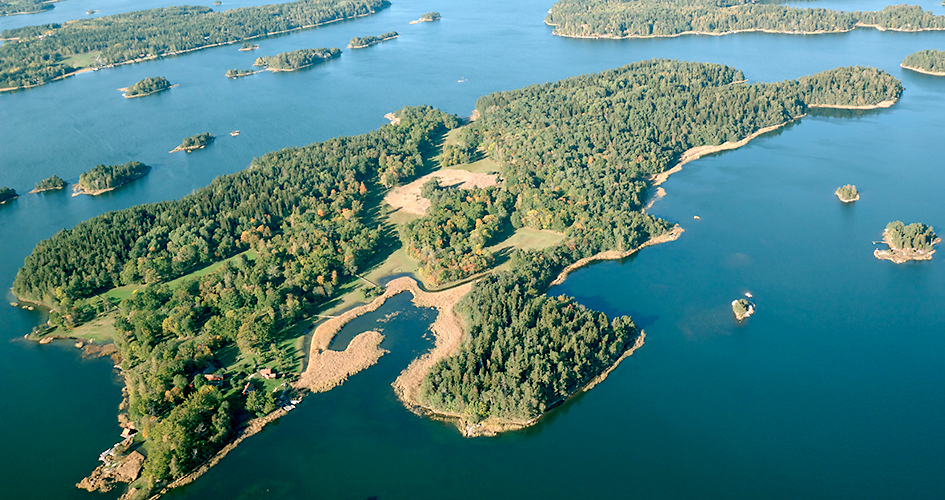 Foto: Bergslagsbild AB
Foto: Bergslagsbild ABHistory
The earliest maps of Ängsö from the 17th century indicate that Ängsö then consisted of two islands roughly equal in size with a narrow channel between them.
The Ängsö islands were under the jurisdiction of Väringsö and were used as hay-making islands. Grass and plants on the moist seashore meadows on either side of the channel were harvested for livestock fodder. In 1725 a farmer came to Ängsö to live, and a croft was built at Hemudden, a headland in the south. With the land uplift, the channel between the Ängsö islands became increasingly shallow, and during the 19th century the islands joined to become a single island. Large parts of the island were then a beautiful cultural landscape with hayfields, deciduous groves and pastureland rich in species.
The cultural landscape emerges
The cultural landscape is a result of land use with hayfields and grazing. Early in the spring, when the vegetation began to sprout, the meadows were tidied up. Branches and leaves that had collected on the ground during the winter were then removed to make the land more amenable to growing hay. At the end of July, when the parnassia and spotted cat's ear had flowered and the yellow rattle’s seed pods had ripened, it was time for hay-making. The meadows were harvested with scythes, and the hay was left to dry on the ground and in hay-drying racks. When the hay had dried, it was stored in hay-barns until winter. After the hay-making, the livestock were allowed to graze the meadows. Up until then, they had grazed in the forests and were kept out of the meadows by fences. Reeds also were harvested, and trees were pollarded to make use of the leaves and twigs as animal fodder.
Ängsö becomes a national park
At the beginning of the 20th century, some old oaks on the island were threatened by logging, which caused Ivar Afzelius, justice of the Supreme Court and summer resident on Väringsö, to write a letter to the Royal Board for Crown Lands and propose preservation of Ängsö. The proposal got a good reception, and in 1909 Ängsö National Park was formed, becoming the first national park in Sweden and in Europe. The aim of the park was to preserve the beautiful meadows and deciduous groves.
The decision leads to overgrowth
In the opinion of contemporary botanists, the hay-making and grazing livestock on Ängsö were devastating for the fragile fauna. Nature should be left untouched, and the crofter had to leave the island.
When the spruce, brushwood and high-growing plants no longer were kept in check through grazing and hay-making, Ängsö quickly became overgrown. Not until the 1930s was there a realisation of the magnitude of the overgrowth in the national park and the importance of hay-making and grazing for the cultural landscape. In 1943 an action programme for Ängsö was drawn up, and a comprehensive renovation project to restore the landscape was introduced. The land was cleared of brushwood, and hay-making and grazing were resumed.
The current administration
Today the Swedish Environmental Protection Agency has the main responsibility for Ängsö National Park, but the county administrative board is responsible for seeing that the park is administered according to the management plan. Two naturalists work on the island, most of the old meadowland has been restored and there is an ongoing effort to preserve the cultural landscape and biological diversity.
Share with your friends
Share this page with your friends on Facebook, X (formerly Twitter), Google+ and e-mail.





